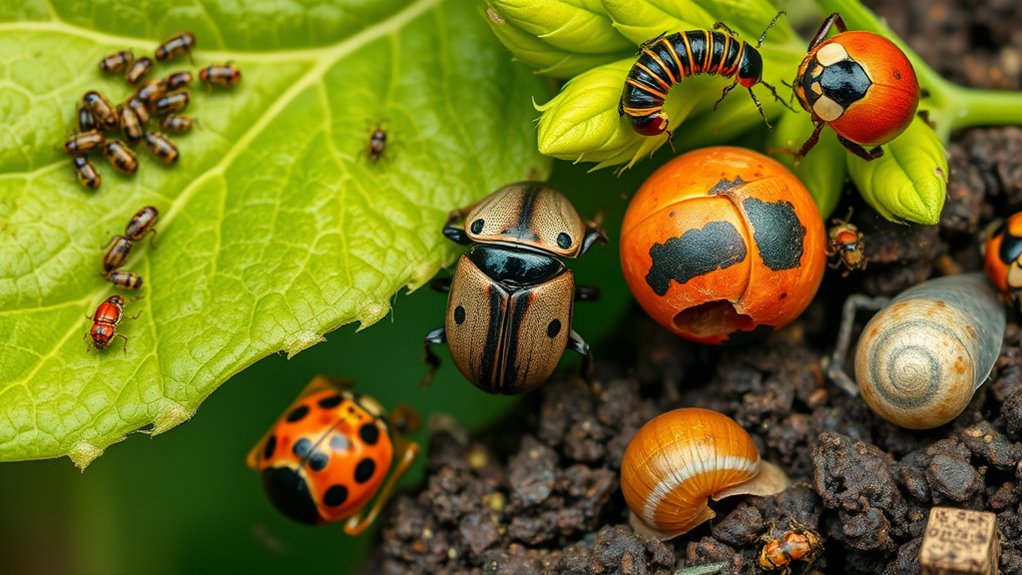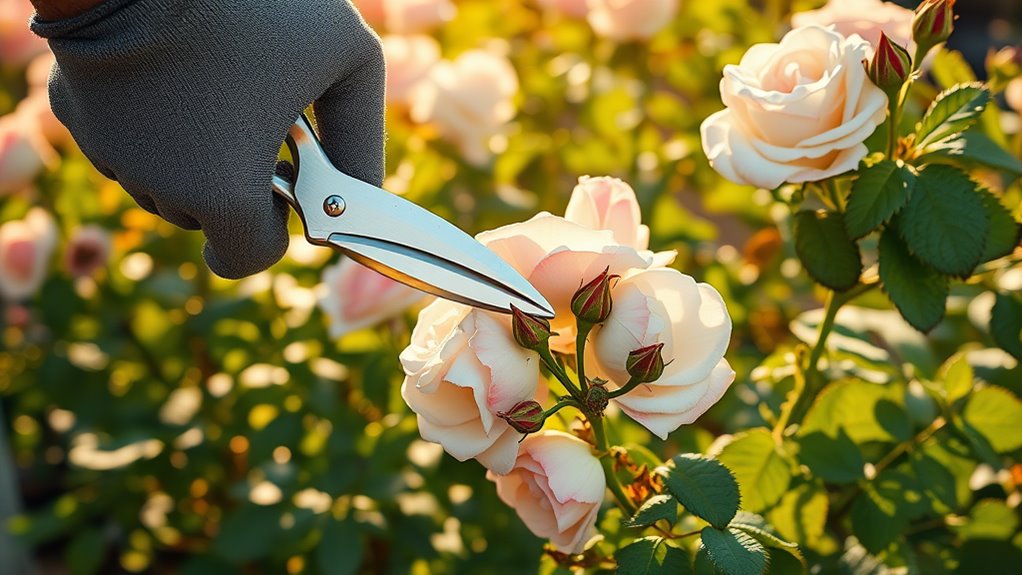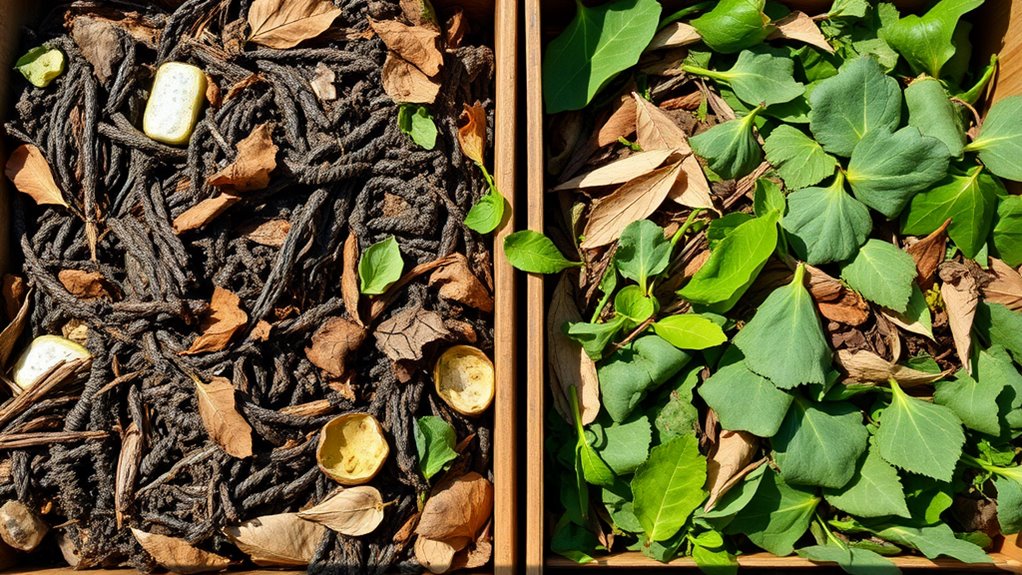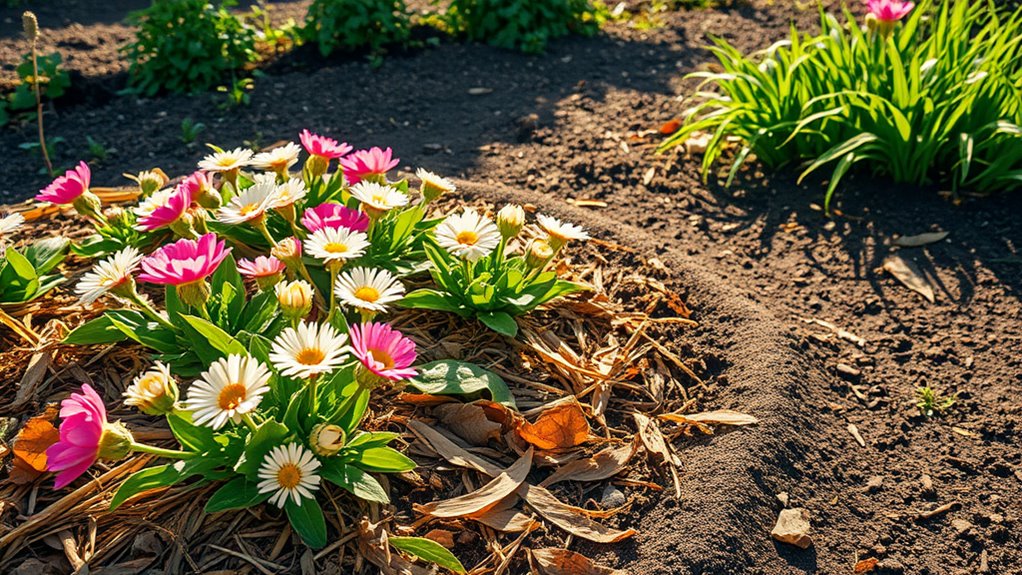5 Pests That Are Ruining Your Plants (And How to Stop Them)
If aphids are clustering on your plants, introduce ladybugs or apply insecticidal soap to knock them out quickly. For spider mites, boost humidity and use neem oil to eradicate them effectively. You’ll tackle caterpillars by hand-picking or spraying BT for natural control. Slugs and snails won’t stand a chance with copper barriers and beer traps. Whiteflies yield to parasitic wasps and sticky traps, keeping your garden thriving. Further strategies await to safeguard your greens.
Key Takeaways
- Aphids cluster on new growth and leave honeydew; control with ladybugs, insecticidal soap, or neem oil.
- Spider mites thrive in dry conditions; eradicate by increasing humidity and applying insecticidal soap weekly.
- Caterpillars strip foliage quickly; stop them by hand-picking or using Bacillus thuringiensis sprays.
- Slugs and snails devour leaves; prevent with copper barriers or beer traps for effective removal.
- Whiteflies weaken plants by sap-sucking; control with ladybugs, insecticidal soaps, and yellow sticky traps.
Aphids: Effective Identification and Control
Aphids are one of the most common pests wreaking havoc on your plants, often appearing as tiny, soft-bodied insects in green, yellow, or black.
You’ll spot them clustering on new growth, leaves, and stems, leaving a sticky honeydew that signals infestation. In your pest control guide, check for curled leaves or stunted growth as key identifiers.
To control them effectively, you introduce ladybugs or lacewings as natural predators, or apply insecticidal soap directly—always test on a small area first.
For severe cases, rotate with neem oil to disrupt their lifecycle, ensuring minimal plant damage. Moreover, utilizing easily accessible staples can enhance natural pest prevention in your garden.
Stay vigilant for early intervention.
Additionally, explore natural DIY techniques using household items to create a pest-free environment without any cost.
Spider Mites: Prevention and Eradication Techniques
Spider mites, those tiny arachnids that thrive in dry conditions, can devastate your plants by sucking out vital juices and spinning fine webs on leaves.
To prevent infestations, you’ll maintain higher humidity by misting regularly and inspecting new plants before introducing them. Avoid over-fertilizing, as it attracts these pests. Additionally, consider unconventional remedies to further enhance your prevention strategies.
For eradication, isolate affected plants immediately and apply insecticidal soap or neem oil weekly. Introduce predatory mites for natural control, and prune heavily infested foliage to stop the spread.
Monitor progress closely to ensure complete elimination. Always wear gloves during handling for safety.
Additionally, for enhanced protection, try incorporating natural pest sprays made from organic ingredients to complement your existing methods.
Caterpillars: Natural and Targeted Removal Methods
While caterpillars can rapidly strip your plants of foliage, leaving behind chewed leaves and potential disease entry points, you’ll find effective removal starts with natural methods like hand-picking them off during early morning inspections. Additionally, incorporating herbal repellents such as basil or mint can help deter caterpillars naturally in your garden.
To enhance this, introduce beneficial insects such as parasitic wasps or lacewings, which prey on caterpillars without harming your garden’s ecosystem.
For targeted control, apply Bacillus thuringiensis (BT) sprays directly on affected leaves; it’s a safe, organic bacterium that specifically kills caterpillars upon ingestion.
Regularly inspect and remove eggs from leaf undersides to prevent future outbreaks, ensuring your plants thrive pest-free.
Incorporating additional eco-friendly methods from natural pest control can help maintain a balanced and healthy garden ecosystem.
Slugs and Snails: Barriers and Organic Solutions
Slugs and snails, much like the caterpillars you’ve already addressed, sneak in at night to devour your plant leaves and create slimy trails of damage.
To stop them, install barriers like copper tape or diatomaceous earth around plant bases; these deter slugs by delivering a sharp or electric shock sensation.
For organic solutions, set beer traps by sinking containers of fermented liquid into the soil to attract and drown pests.
Hand-pick slugs after dusk for quick results, and use iron phosphate pellets, which break down naturally and target mollusks without harming beneficial insects.
Keep mulch thin to limit moist hiding spots, enhancing overall control. These methods align with eco-friendly practices to promote a healthier garden ecosystem.
Slugs and snails are among the top five pests outlined in essential tips for managing garden threats, emphasizing the importance of these preventive measures.
Whiteflies: Biological Controls and Treatment Options
Whiteflies, tiny sap-sucking pests that cluster on plant undersides and weaken your garden, demand targeted strategies for control.
You’ll combat them effectively with biological methods that preserve beneficial insects and your ecosystem.
-
Introduce natural predators*: Release ladybugs or parasitic wasps; they devour *whiteflies without harming plants.
-
Apply insecticidal soaps****: Spray a mild soap solution directly on infested areas to suffocate adults and larvae swiftly.
-
Use yellow sticky traps****: Hang these near plants to trap flying adults, reducing populations and monitoring outbreaks.





